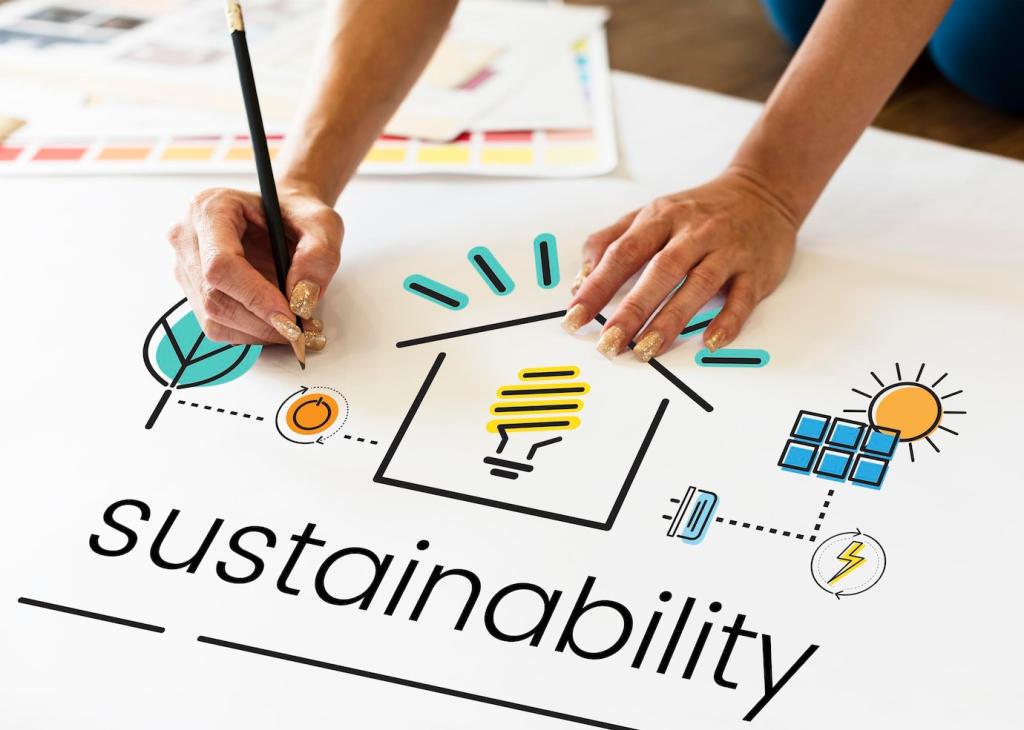Maximizing Energy Efficiency in Home Design
Chosen theme: Maximizing Energy Efficiency in Home Design. Welcome to a fresh, inspiring take on creating homes that are comfortable, beautiful, and radically efficient. Together we’ll explore smart choices—from the building envelope to daily habits—that shrink bills, reduce emissions, and amplify well-being. Share your ideas and subscribe for weekly design tips, success stories, and practical checklists you can use right away.
Passive Design Foundations
Positioning living spaces to capture winter sun while avoiding summer glare dramatically cuts heating and cooling needs. Thoughtful window placement brings soft daylight deeper inside, reducing lighting loads and supporting circadian comfort throughout busy, modern routines.
Passive Design Foundations
A tight, well-insulated envelope keeps conditioned air inside and extreme weather outside. Continuous insulation, careful air sealing, and minimized thermal bridges reduce energy loss, stabilize temperatures, and prevent drafts that often masquerade as mysterious discomfort in otherwise beautiful homes.
Smart HVAC and Ventilation
Cold-climate heat pumps deliver efficient heating and cooling from one compact unit. Zoning lets you condition spaces only when needed, cutting wasted energy while matching diverse comfort preferences across bedrooms, offices, and living areas without overcompensating for rarely used rooms.


Windows, Glazing, and Shading
Modern low-E coatings reflect heat while letting in welcoming visible light. Pair appropriate solar heat gain values with climate-specific needs to reduce overheating or heat loss, trimming loads without sacrificing views, daylight, or the uplifting connection to the outdoors many homeowners cherish.
Windows, Glazing, and Shading
Awnings, louvers, and deciduous trees block high summer sun yet welcome low winter rays. Thoughtful shading strategies reduce cooling demand dramatically, while preserving brightness and privacy. Combine with light-colored exteriors to reflect heat and extend comfort beyond the building envelope into outdoor spaces.

Design PV systems after efficiency upgrades to avoid oversizing. Consider roof tilt, shading analysis, and future electrification plans. A smaller, smarter array often outperforms larger systems when paired with thoughtful schedules, efficient appliances, and realistic expectations about generation profiles across seasons and weather patterns.

Home batteries store midday solar for evening peaks, easing grid strain and lowering bills in time-of-use markets. Pair storage with automated controls to pre-cool or pre-heat, flatten peaks, and maintain comfort during outages without the noise or emissions of traditional backup generators.

Heat pump water heaters extract ambient heat to produce hot water efficiently, often cutting energy use dramatically. In sunny regions, solar thermal preheats water, reducing workload further. Together, these strategies shrink loads and free electrical capacity for cooking, charging, or future home expansions.

Layered LED Lighting That Loves Daylight
LEDs use far less energy than incandescents while offering better color and flexibility. Combine task, ambient, and accent layers with daylight sensors and dimmers to reduce consumption, enhance mood, and celebrate architectural features without resorting to overly bright, wasteful general illumination everywhere.

Appliance Selection and Kitchen Wisdom
Energy Star appliances, induction cooktops, and right-sized refrigerators deliver notable savings with excellent performance. Look for credible test data, not just marketing claims. Thoughtful placement and proper ventilation improve reliability and efficiency, while reducing unwanted heat that raises cooling loads during warmer months.

Taming Phantom Loads with Smart Controls
Chargers, media gear, and office devices sip power even when you are not looking. Smart strips and schedules eliminate standby waste, while dashboards reveal culprits. Track your weekly results and share improvements—friendly competition helps everyone lean into better, lasting energy habits together.
Data-Driven Design and Comfort

Granular data exposes patterns you cannot guess. Submetering HVAC, water heating, and plug loads highlights priorities. Seasonal comparisons show how envelope improvements and controls perform, turning intuition into evidence you can confidently use to plan budgets and next-phase upgrades responsibly.
Materials, Embodied Carbon, and Real-World Stories
Low-Carbon Insulation and Air Sealing
Cellulose, wood fiber, mineral wool, and advanced foams each balance performance, moisture, and carbon differently. Meticulous air sealing often provides outsized gains, reducing drafts and noise. Choose assemblies that manage vapor safely while delivering the airtightness modern energy-efficient homes demand through every season.
A Retrofit Anecdote from a Bungalow
After insulating the attic and sealing rim joists, a 1940s bungalow cut winter gas use dramatically while improving comfort. The owner noticed quieter rooms, steadier temperatures, and fewer allergy flares—proof that efficiency upgrades can nurture health, serenity, and long-term affordability together.
Healthy Materials, Long Life, Low Waste
Durable finishes and low-VOC products reduce replacement cycles and protect indoor air. Design for easy maintenance and future upgrades to avoid demolition waste. Longevity is an energy strategy, too—keeping materials in service conserves resources and protects the efficient shell you worked hard to build.
